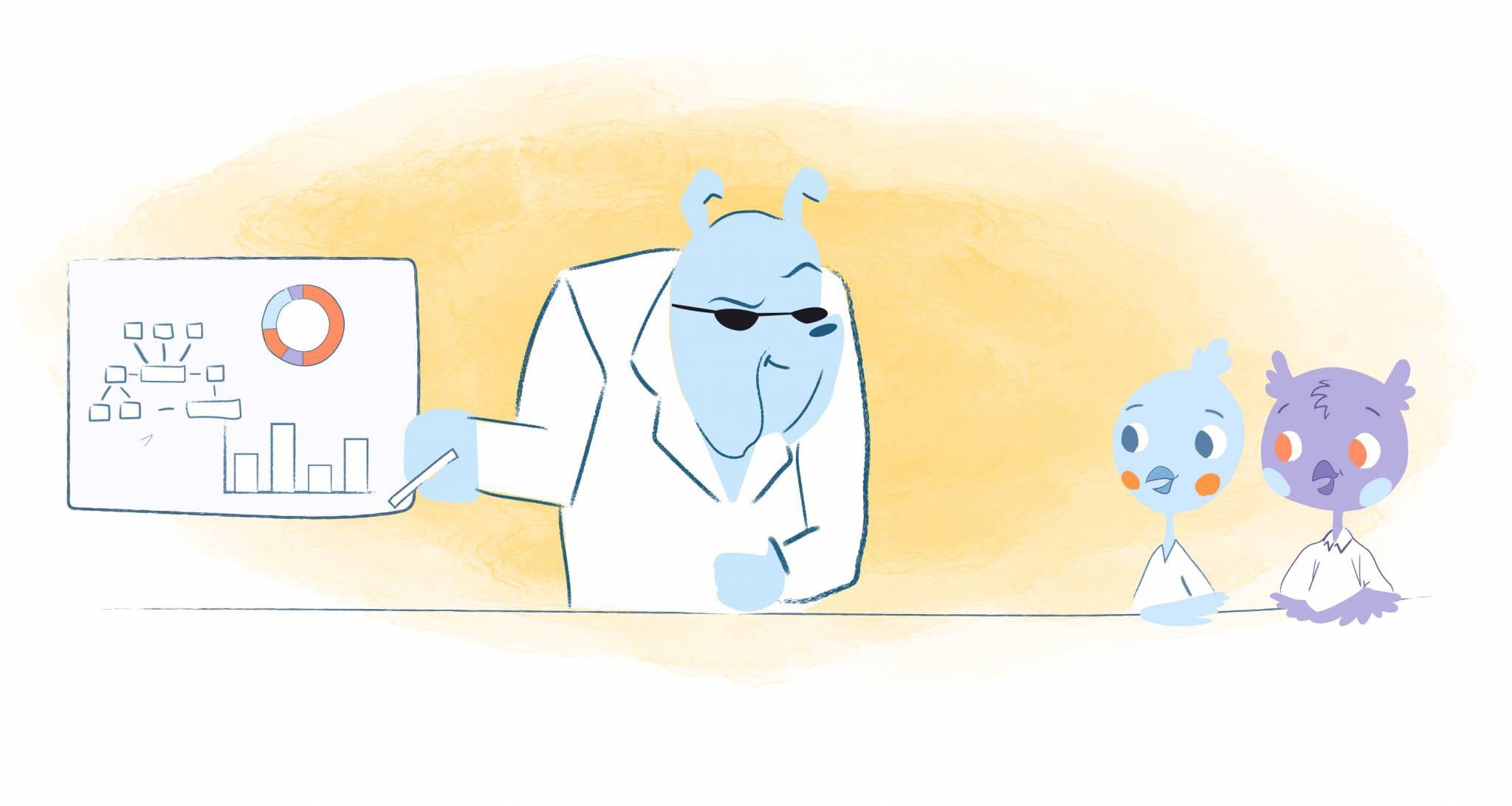

Let’s not sugarcoat this. Meetings suck your time, your energy, and occasionally your soul. Meetings waste your team’s focus, they’re boring, and they’re the leading cause of death in office productivity. The good news is that there are ways to reduce the number of meetings within your organization. But, if you dread meetings, how can you create team-lead accountability?
Thanks to project management tools and internal communication channels like Slack, you can collaborate on projects, ask questions, assign tasks, and map out an entire project without ever having a meeting.
And meetings are a necessary evil: They’re where problems and conflicts are resolved. They also enable goals to be set and achieved, and feedback to be given and received. It’s where you can “rally the troops.”
Those reasons may not be enough to help you and your team get over the collective disdain of meetings, but if you create a culture of accountability, that might change.
Find a common purpose and set clear expectations.
“Set the stage for any team initiative by talking about the ‘why,” suggests Cathy McCullough, a business growth consultant, and culture expert at Rhythm Systems. “Connect what you need the team to do with why you need them to spend valuable time doing it. What’s the point? Why does it matter? We always tend to tell a team of people what to do; many leaders are good at that. As a result, the ‘why’ gets wholly ignored.”
After the purpose is clear, you can set measurable goals, so everyone involved with the meeting knows what’s expected.
Assign pre-work.
Assigning pre-work can be as simple as asking your team to provide critical solutions, suggestions, examples, or feedback about the agenda before the meeting takes place. Getting this information before the meeting not only ensures that everyone comes prepared, but it also makes people curious. A little buzz about a meeting goes a long way to making the session better. After all, your team is involved in its creation.
Adopt an “everyone plays” mentality.
Remember when you used to play soccer as a kid? It probably wasn’t much fun when you had to sit on the bench, right? The same is valid for meetings.
We often dread attending them because we feel like we contribute nothing. Rather than let that happen, get everyone involved by assigning roles, topics, or updates for every participant to share with the group. The assignments will make everyone more attentive and feel more empowered because of additional responsibility.
More importantly, it makes every attendee feel like his or her opinions and feedback are genuinely valued and play a role in the bigger picture.
Follow the “two-pizza” rule.
Meetings are more effective when there aren’t as many individuals involved. Only key players should attend. Fewer people not only keeps the meeting moving faster, but it also keeps them be more productive.
“Besides, the more people you have in the meeting room, the less responsibility each of them has,” writes Renzo Costarella. “As items are discussed, people will feel less inclined to speak up as they assume it will get covered by the other attendees. You need to invite key players, not spectators.”
As a general rule of thumb, follow the advice of Jeff Bezos: Don’t hold a meeting if two pizzas aren’t enough to feed everyone.
Decide who will do what and by when.
One of the most effective ways to create a culture of accountability is by assigning tasks to team members and giving them deadlines. Deadlines inspire your team members to take action and hold themselves accountable for their specific responsibilities.
However, it’s now your responsibility to step back and avoid micromanaging. Instead, give your team the freedom to complete these assigned tasks however they want — just as long as the project completion is within the timeframe. You’re only here to listen and provide support.
Rotate the leader.
One person should lead each meeting for the sake of efficiency; rotating that role will give your sessions variety.
You’ll need to provide guidelines for each meeting leader to follow. Allowing a rotation of employees to volunteer and experience leading a meeting can make them feel valued and visible. A rotating meeting leader can ensure the “regular” meeting leaders don’t burn out. All of your employees will step up their game on every project with revolving meeting leadership. Watch it happen.
If you’ve called a meeting because urgent decisions need to be made — make sure the leader of the meeting is also a high-ranking decision-maker.
Include “culture moments.”
When you start your meeting, kick it off with a “culture moment.” It’s a simple way to make the session more enjoyable while aligning expectations for how you want invitees to think and act.
For example, if you give a team player recognition for going above and beyond, tell the story — like how two departments collaborated on a project together — or ask others to share a story or give recognition.
Leave room for white space.
Keep the agenda as concise as possible. Don’t pack the meeting with so many items that it goes over the allotted time. Call this, leaving a little extra room for the white space. Not overloading a meeting with too many details also enable spontaneous discussions that help spark creativity.
Follow through with a plan.
Once the meeting has concluded, make sure attendees leave with action items. In most cases, these tasks are expected to be completed by the next meeting. If they’re not, you may want to reconsider whether the tardy person should continue to be a key player in future meetings.
Send an email to all attendees, so everyone knows who is expected to be in the session. All employees need clear indications of what is expected. You’ll not want an employee coming into the meeting who shouldn’t be in attendance. Similarly, you’ll not want someone not showing up to a meeting when their presence is essential. Include what assignments and preparation are necessary. Who’s responsible for what and when the work should be completed all will be decided beforehand so the meeting can remain short and sweet.
Empowering your team to take the reins at meetings can result in fresh ideas, new perspectives, and interest. Rather than put the onus on yourself to keep meetings captivating, pull your team members in to share the load — they’ll appreciate it as much as you will.











Albert Costill
My name is Albert Costill and I'm a content marketer at Calendar. If I can help people become more productive in my journey, even better. If you ever have a question about your Calendar or how you can use it - - don't hesitate to reach out. I'm a Calendar Pro.